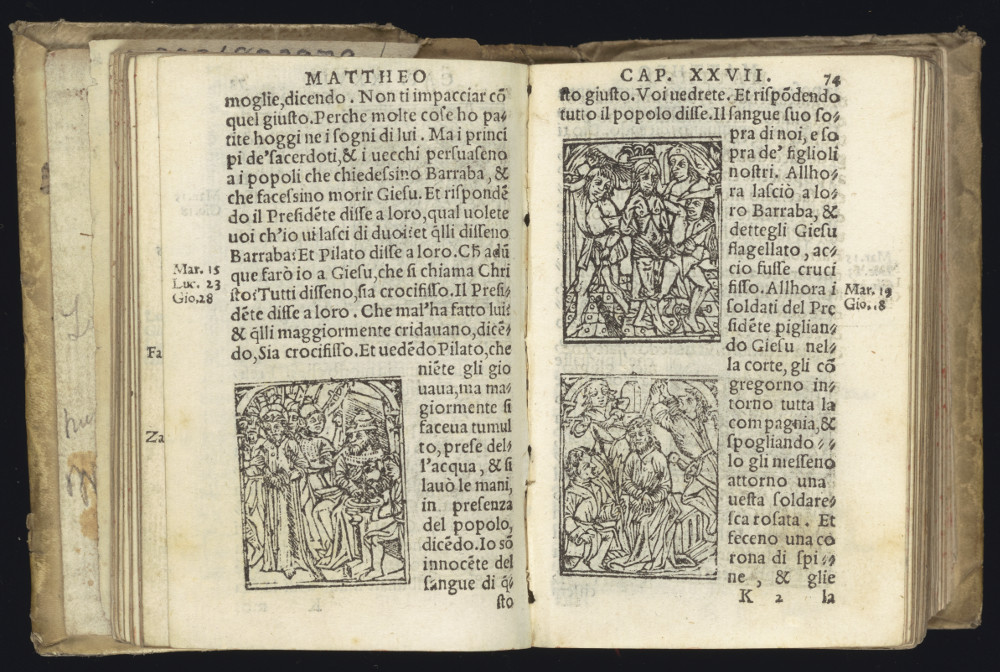
The book I have chosen is very small and not particularly impressive to look at. It requires a bit of imaginative investment to understand the cataclysmic impact it had on the lives of Renaissance Italians. This impact is located in two distinct features of this printed New Testament.
Firstly its format, which is called ‘sixteenth’, a technical term used by printers to indicate that sixteen pages of text have been printed onto the original sheet of paper. Such a tiny format is clearly aimed at a very different kind of market than the large, decorative Bibles found in Churches and institutions. This is a domestic product, relatively affordable, which can be slipped in a pocket and carried. We cannot underestimate the widespread impact of these kinds of material innovations in print.
Secondly its language: this translation of the Bible into Italian was completed by Antonio Brucioli in 1532. For the first time, ordinary people with no working knowledge of Latin could read the book that was central to their faith. Of course we know where this innovation eventually led in northern Europe – translating the Bible was part of a bigger Reformation movement that ended with the definitive break with Rome. In 1532 everything was still up for negotiation, however, and in Italy as elsewhere in Europe there was a large appetite for a vernacular Bible to bring the word of God to everyone. But the Church came down hard on this innovation: by 1559, Brucioli’s translation had been banned and was placed on the Index of Prohibited Books.
This tiny, humble book represents radical innovations that changed the way people read and thought about their faith.
Abigail Brundin Principal Investigator, Domestic Devotions project.




